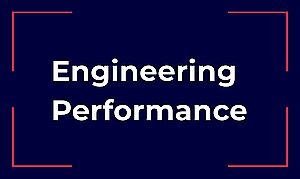For the seventh time DMT GmbH & Co. KG hosted the expert discussion on final repositories, which once again this year was very well received by specialists from industry, research and authorities.
Insights into the development of the Finnish repository
The world's first nuclear repository for high-level radioactive waste is being built in Finland. The final disposal is based on a multi-barrier system, the design, development, production and monitoring of which is essentially based on the successful cooperation of scientific research, careful decision-making and compliance with operational and regulatory requirements.
Dr. Edgar Bohner, Head of the Infrastructure & Health Research Team at VTT, Finland, presented the development work for the multi-barrier system and focused in particular on the construction and protection of the bentonite barrier. According to Bohner, the technologies required for the exploration and construction of geological repositories for high-level radioactive substances are basically available. Many of these technologies come from the traditional construction or mining industries, but must be modified and adapted for their use in final disposal in order to meet the extremely high demands on operational and long-term safety.
In Finland, too, trust in nuclear final disposal must be built. This is a continuous and ongoing process based on transparency and the willingness to communicate with all parties involved on security concepts.
Remediation of contaminated sites in Ukraine
Following the disaster in Chernobyl in 1986, contaminated waste from decontamination measures was also generated in parts of the country that do not belong to the so-called restricted zone around the damaged nuclear power plant. This was collected at around 50 different locations and stored close to the surface.
Carsten Scior, project manager at DMT, reported on the EU-funded project to evaluate the locations and plan for salvage of this waste, including the procurement of the necessary equipment. Together with the partners TÜV NORD EnSys, Brenk Systemplanung and Plejades, a ranking of the affected sites was carried out and a pilot site was selected. A remediation concept was developed for this site and a safety assessment carried out. Since the protection of most of the sites is now inadequate or no longer available, a roadmap was drawn up to secure the sites and protect the surrounding villages and sent to the responsible authorities.
Continuity in Euratom research on the final disposal of radioactive waste
Christophe Davies, European Commission project officer in the Directorate-General for Research & Innovation, provided an insight into the EU’s organisation and support for the management of radioactive waste through the Euratom research and training programme. Since 1975, Euratom has supported research activities on the management and disposal of radioactive waste. While individual comparatively small projects were initially funded, the networks and research alliances have become increasingly larger and the topic has become more complex.
The current research programme (2014-2018) aims to initiate a European Joint Research Programme between the Member States on the topic of “Radioactive Waste Management”. Funding of up to EUR 32.5 million has been earmarked for this purpose. Applications for the current "Work Programme 2018" can still be submitted until 27 September, 2018.
Project progress recorded
Dr. Thomas Lautsch, Technical Managing Director of the Bundesgesellschaft für Endlager (BGE) presented the current status of the conversion of the former Konrad iron ore mine into a repository for non-heat-generating waste. A particular challenge is the qualification of the two shafts for their use in a repository mine, while simultaneously carrying out the intensive underground development and preparation work.
At the Konrad 1 shaft, among other things, the reconstruction work of the shaft collar on the northern compartment is currently underway. The next measures include the erection and commissioning of the conveyor system in the northern compartment as well as the renewal of the head gear. At Konrad 2 shaft, the conversion work for the main shaft is underway with new functionalities, higher safety requirements in terms of fire protection, earthquake safety and technology. Planning is also being carried out for the construction of the above-ground facilities. In accordance with the nuclear rules and regulations, a high amount of expertise and licensing work is required to ensure that the plants can be safely commissioned.
Underground, the infrastructure for the repository operation is being built with the particular challenge of driving the new shaft landing at the 2nd floor level out of shaft 2.
Invitation to the expert discussion on final repositories 2019
On 21 March 2019, DMT invites you to the "8th Essen Expert Talk on Final Repositories" - a date that many participants have already made a firm note of.
Contact and further information:
Dr Daniela Gutberlet
Tel +49 201 172-1552
daniela.gutberlet(at)dmt-group.LÖSCHEN.com
Download the press release Expert Talk on Final Repositories (PDF)


